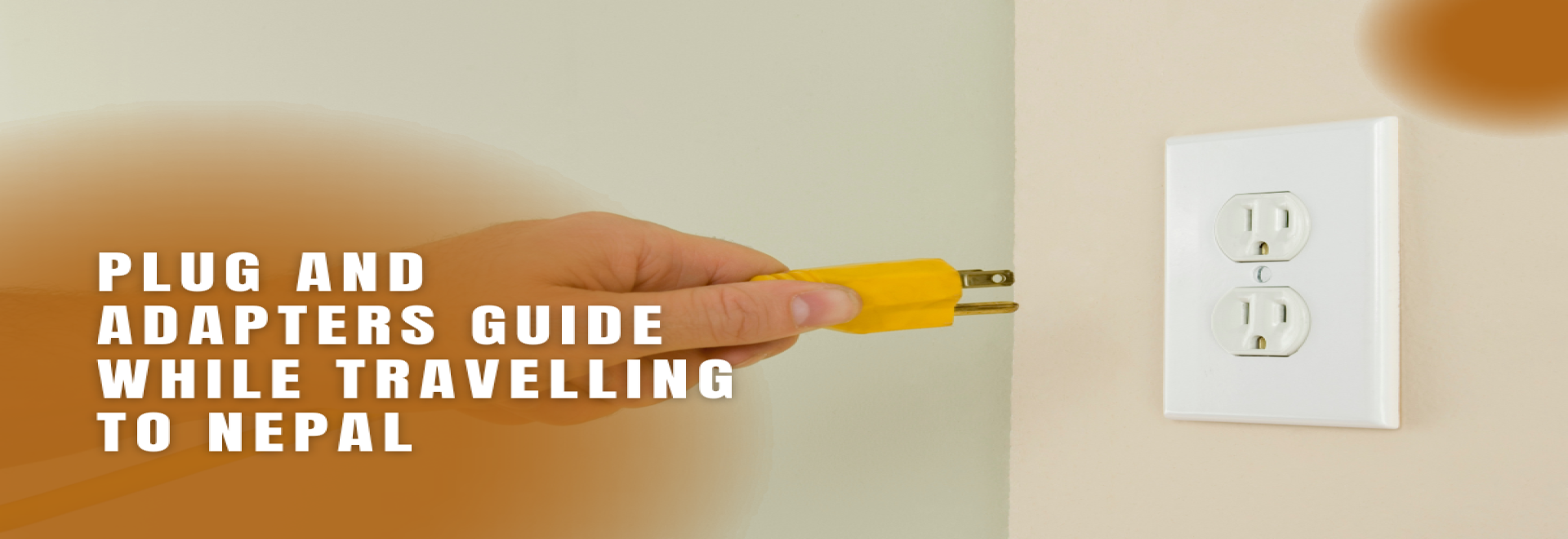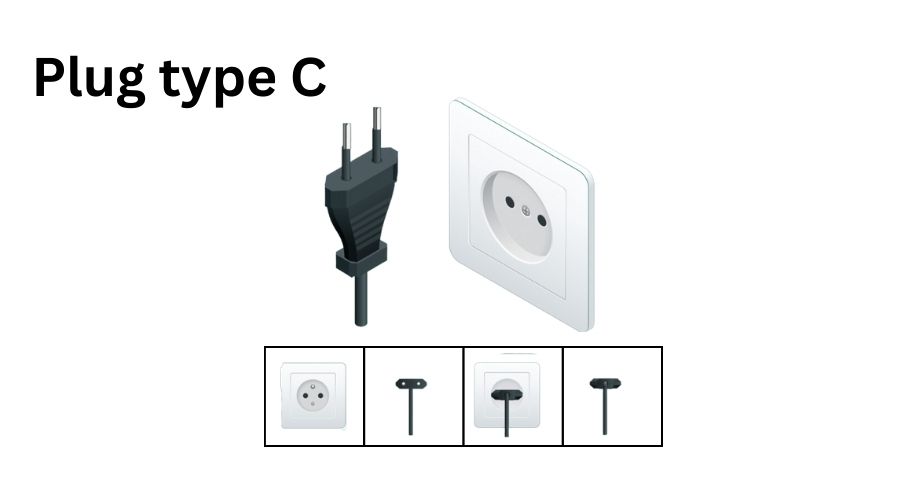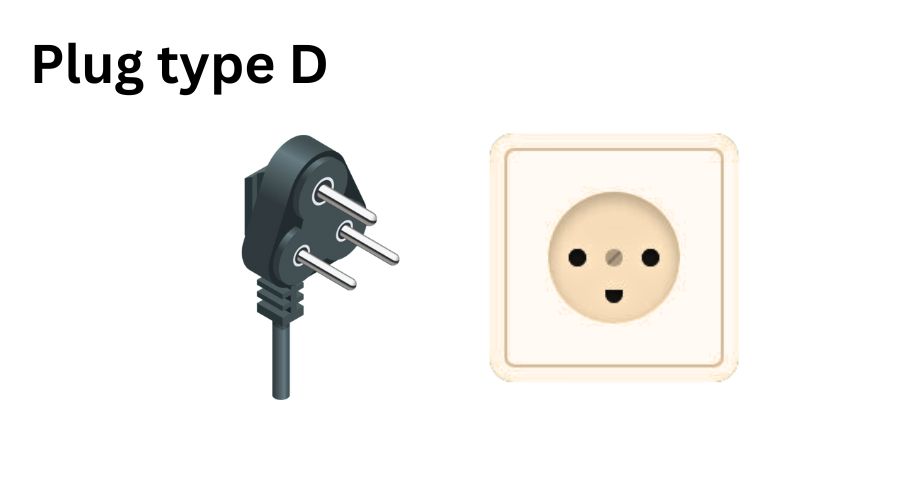
Travelling to Nepal? Plug and Adapters Guide

Travelling to Nepal? Plug and Adapters Guide
swotah travel
23065
06, 07 2023
If you are a foreigner planning to pay a visit to Nepal, it is good to know about the plugs used here and what adapters you require. Dealing with electronics is very risky, and if you do not know the right way for it, it is very dangerous and full of hassle. Using the wrong plugs causes issues like short circuits, overheating, fire, etc. A plug is an electrical device that is connected to the power outlets or sockets, generally placed on the wall. Plugs connect the electrical devices to the power supply, acting as an intermediate, ensuring the devices receive the right amount of voltage and frequencies. Plugs come in different shapes and sizes with specific pins to fit into particular outlets. Now, coming to adapters and why we need them. Different countries have different plugs that may not always fit into the electrical outlets of Nepal. Therefore, adapters help you to fit your electrical devices in the power sockets/outlets that were formerly incompatible.
All these plugs operate in voltage of 220 V to 240 V, which is the standard for all the power outlets in Nepal. Talking about other countries like America, Brazil, Colombia, etc. have standard voltage outlets of 110 V to 120 V. If you connect appliances of these countries standard directly into the power sockets of Nepal, appliances won’t be able to handle the voltage and damage it, and in worse case scenarios you will end up hurting yourself. For this reason, before travelling to Nepal, make sure to take a voltage converter that will keep the voltage in check according to your electrical devices.
Another important point is that all the Plugs types in Nepal are made to fit the round pins hence, the flat prongs can not be fitted in them. To solve this issue, a travel plug adapter comes in handy. Plug adapter has holes for pins made in them that fit your electronic device and when connected to the power socket, even the flat prongs devices can be used. Since Nepal differs in both voltage and shape standards from most countries, you need both a voltage converter and a plug adapter.
Nepal uses three types of plugs, namely plug type C, plug type D, and plug type M.
Plug type C
Type C plugs ( also known as the Europlug ) have two round pins parallel to each other. Each pin has a diameter of 4 mm to 4.8 mm and is separated by a 19 mm distance. This plug works on a voltage range of 220 to 240 V. Plug type c also fits in the socket of plug type E, plug type F, plug type J, plug type K, etc. They are generally used for low-power devices like cameras, cell phones, laptop chargers, etc.

Plug type D
Type D plugs have three round pins that are arranged in the shape of a triangle. The middle one is longer 20.6 mm long and has a diameter of 7.06 mm, the other two are smaller in length ( 14.9 mm long with a diameter of 5,08 mm ). The purpose of the middle pin is earthing. Type D plugs can withstand higher current and voltage compared to type C plugs. They are used for refrigerators, air conditioners, sound systems, etc.

Plug type M
Type M has three round pins laid out as a triangle similar to that of type D. The type M pins are slightly thicker than that of type D. The singular inner pin has a length of 28.6 mm and a diameter of 8.7 mm, two outer pins have the length of 18.6 mm and a diameter of 7.06 mm. Plug types M and D have the same range of voltage that is 220 V to 240 V, but the current handling capacity of type M is more than that of type D.

How to use a plug adapter the correct way?
Here is a proper guide to assist you through the process of using a plug adapter:
-
First and foremost, determine the type of electrical socket (C, D, or M), then find the plug adapter that fits in the socket. Before getting the adapter to check the holes are made in an adapter to fit your electrical appliances.
-
To make sure it is safe, use it in the shop itself and see it is completely safe.
-
To use the adapter, insert it into the power outlet and check to see if it is firmly connected.
-
Check for the power indicator that shows the plug adapter is ready to be connected to electrical devices.
-
Now, connect your electrical device carefully, insert it all the way in, and use it carefree.
How to use a voltage converter?
Now, here is a guide on how to use a voltage converter:
-
Read voltage specifications and compatibility before purchasing it.
-
Check the voltage your device can handle and see if it is compatible with the voltage in Nepal. Now check and make sure the voltage converter is able to convert it according to the needs of your electrical appliance.
-
Now in any place in Nepal where you stay, connect the voltage converter to the power socket and check to see if it is connected properly.
-
Connect the device with low voltage (1120 V to 120 V) to help it withstand the standard voltage of Nepal.
-
Finally, use the device to ensure all the safety measures are taken.
How to determine if your device needs a voltage converter?
There are dual voltage-rated devices and single voltage-rated devices. Typically dual rated voltage device does not need a voltage converter (although this is not always the case). In the case of a dual voltage-rated device, you need to check the appliance rating plate that is written on the body of the electrical device. It is normally written as Input: 100 V to 240 V (just an example), if this range falls in the standard of Nepal’s voltage supply then your appliance can be operated safely. Hence, no need to use the voltage converter your device is going to adjust the voltage by itself. But if the range does not fall in Nepal’s standard then even the dual voltage-rated devices require the voltage converter.
For single voltage-rated devices check the voltage they can work with as these devices can only work with the voltage mentioned. If the voltage mentioned on the electrical appliance does not fall from 220 v to 240 V then get a voltage converter. In most cases, Single voltage rated devices do need a voltage converter.
Voltage converter Vs. voltage transformer
Voltage converters and voltage transformers both perform the same function. The only difference between these two is in the duration you need to keep the voltage in check for. Voltage converters are idle for a short period’s use ( only 1 to 2 hours). Voltage transformers on the other hand voltage transformer can keep operating for long hours continuously as they are made with thermal protection mechanism which prevents it from heating excessively.
Caution note: travel adaptors can not be connected with electrical devices that need earthing. Only use the travel adaptors with electrical appliances that are double insulated. The double-insulated symbol has two soiree shapes. One square is inside the other square.
Also Read:
Peak Climbing Permits and Cost in Nepal
Best Travel Insurance For Trekking Up To 6000m In Nepal
Advice to use electrical appliances safely while traveling in Nepal:
-
Do not touch any power sockets with wet hands.
-
If the sockets or the pins of the plugs look damaged, then refuse to use them.
-
Make sure cables are not damaged or nicked in between. If the nicked cables are held with insulating tapes then immediately complain about it to the owners of the place you are staying at and have them changed.
-
If your adaptor or voltage converter does not fit in the power socket, do not force in it. Doing this can damage power sockets and the adaptors.
-
Always stay aware, if you smell even the slightest bit of burning smell and buzzing or
-
fusing sounds of cable, then on the spot, take off the power supply and check what’s wrong.
-
Do not overload plug sockets. If too many electrical devices are connected at once, then overheating can lead to a fire outburst.
-
Ensure there are RCDs (Residual Current Devices ). These devices automatically turn off the power / current supply if there is any kind of issues. They can be termed as a smart fuse.
-
In the places you stay during your visit to Nepal, if your find naked wires being connected to the power sockets directly, then act against it.
-
People traveling with children never allow their children to play with electrical appliances and power sockets.
-
Keep drinks, water, and other liquor away from the power supply and electrical devices.
-
When not in use, ensure the power supply is switched off.
-
Before buying any type of electrical appliance, travel plug adaptors, travel voltage converters, or travel voltage transformers, inquire to see if it is not damaged in any way and is safe to use.
-
Always have a fire extinguisher around.
-
Learn some basic first aid skills for electric shock.
NEWSLETTER SIGNUP
Sign up to receive our trip ideas and travel offers!
Get updates and Exclusive Offers up to 20% Discount








